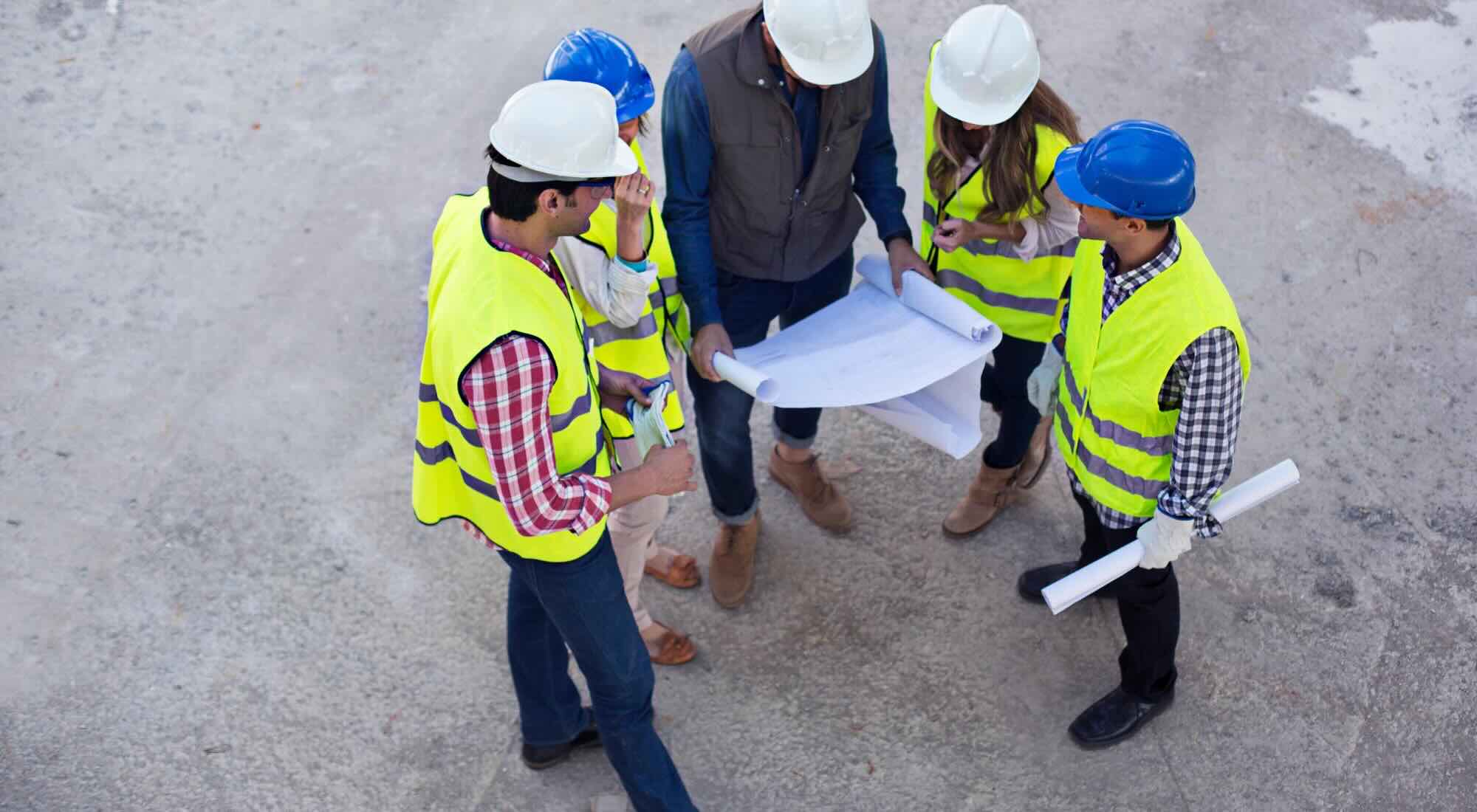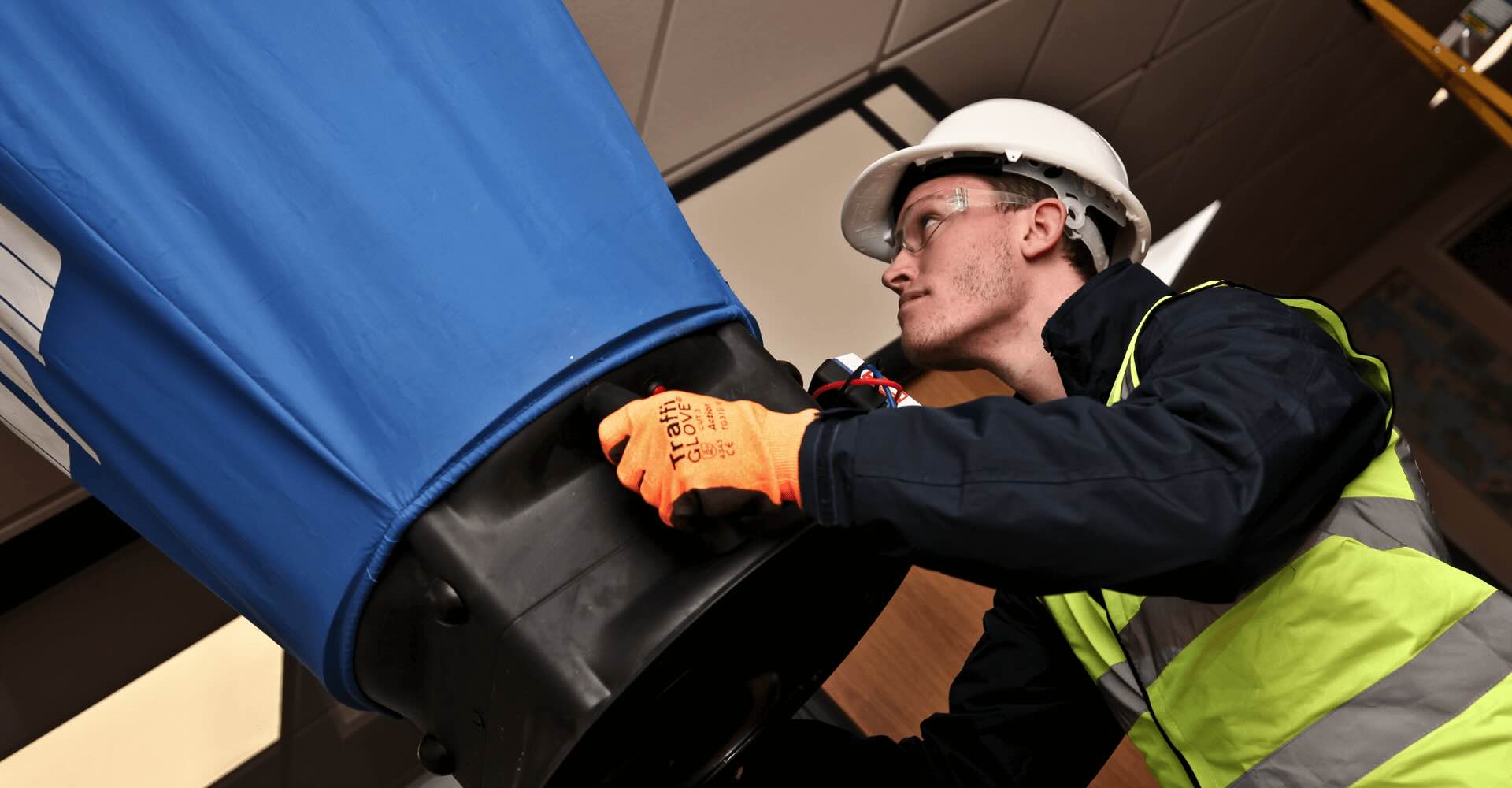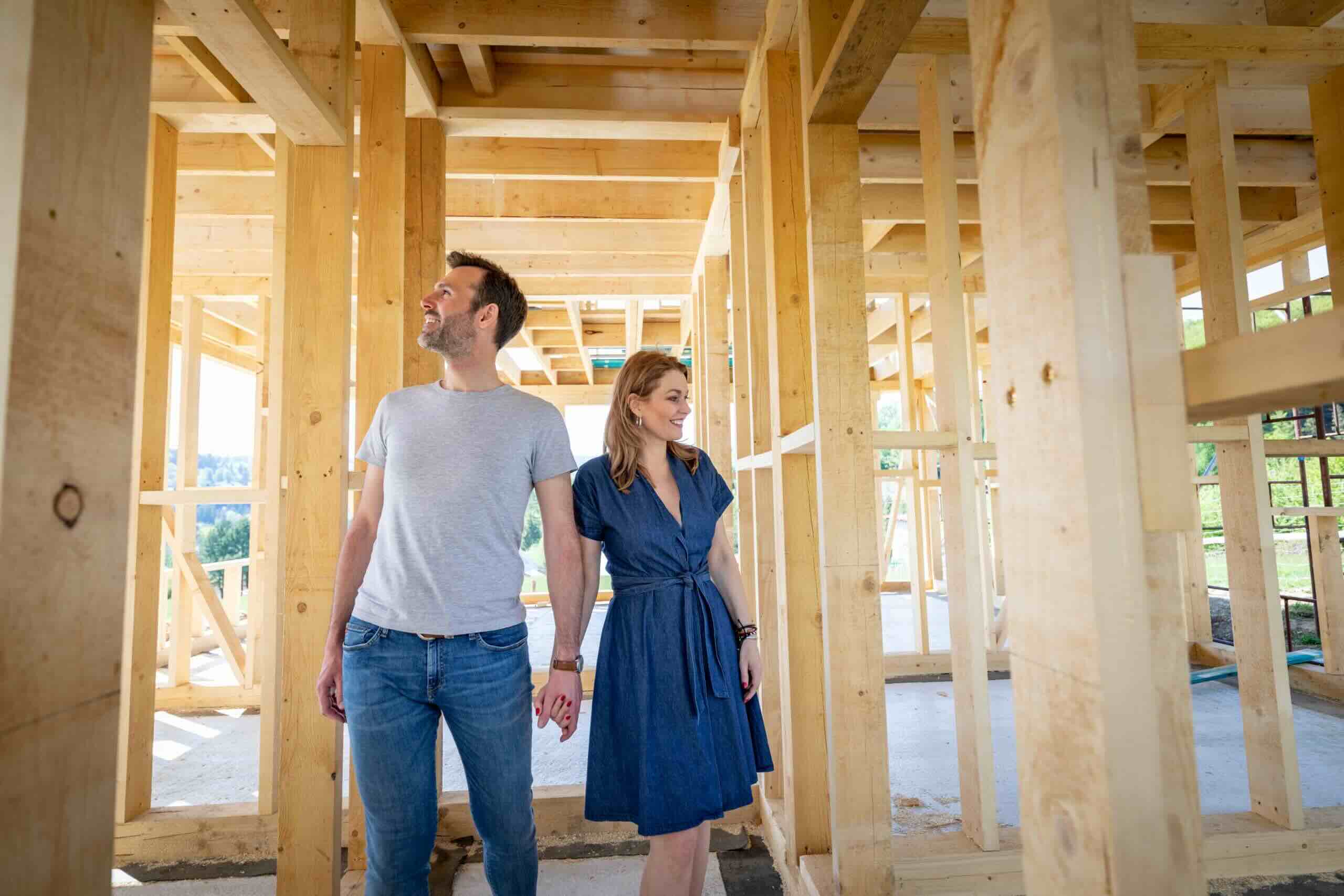Home>diy>Building & Construction>What Is A Pre-Construction Meeting


Building & Construction
What Is A Pre-Construction Meeting
Modified: January 23, 2024
Discover the importance of pre-construction meetings in building construction projects. Learn how these meetings help ensure effective planning and coordination, leading to successful project outcomes.
(Many of the links in this article redirect to a specific reviewed product. Your purchase of these products through affiliate links helps to generate commission for Storables.com, at no extra cost. Learn more)
Introduction
Welcome to the world of construction, where every project starts with careful planning and coordination. In the complex realm of building construction, one crucial step that sets the foundation for success is the pre-construction meeting. This meeting brings together key stakeholders to discuss project details, establish objectives, and align expectations.
A pre-construction meeting serves as a critical milestone in the construction process, providing an opportunity for all involved parties to come together and establish a shared understanding of the project scope, timeline, and roles and responsibilities. This meeting lays the groundwork for successful collaboration, efficient execution, and project completion within budget and schedule.
In this article, we will explore the concept of a pre-construction meeting, its purpose, and the key participants involved. We will also discuss the importance of conducting such meetings, the agenda and topics typically covered, as well as best practices to ensure the meeting’s effectiveness.
Whether you’re a construction professional, project manager, or simply interested in learning more about the intricacies of building construction, this article will provide valuable insights into the significance of a pre-construction meeting and its role in setting the stage for a successful project.
Key Takeaways:
- A pre-construction meeting is a vital gathering that aligns stakeholders, clarifies project details, and establishes safety and quality standards. It sets the stage for successful construction projects through effective communication and proactive risk mitigation.
- Best practices for conducting a pre-construction meeting include preparing a structured agenda, promoting active participation, and fostering a collaborative atmosphere. Following these practices ensures efficient planning and positive project outcomes.
Read more: What To Expect At Pre-Construction Meeting
Definition of a Pre-Construction Meeting
A pre-construction meeting, also known as a pre-con, is a crucial gathering that takes place before the start of a construction project. It involves all key stakeholders, including the client, project owner, architect, contractor, subcontractors, and relevant members of the construction team. The purpose of this meeting is to discuss project details, clarify expectations, establish lines of communication, and address any potential issues or concerns before the project officially commences.
The pre-construction meeting serves as a platform for all parties involved to collaborate, align their goals, and mitigate potential risks. It allows for effective communication and coordination, ensuring that everyone is on the same page and working towards a shared vision of success.
During the pre-construction meeting, various aspects of the project are discussed, including the project scope, construction schedule, budget, safety protocols, and quality standards. It is an opportunity for the project owner to provide specific requirements and preferences, while the contractor and subcontractors can offer insights and suggestions based on their expertise and experience.
Additionally, the pre-construction meeting serves as a forum for identifying and addressing any potential obstacles or challenges. By proactively discussing these issues, the construction team can develop contingency plans and make necessary adjustments to ensure a smooth construction process.
Overall, the pre-construction meeting lays the foundation for a successful construction project by establishing clear expectations, fostering collaboration, and creating a roadmap for the construction team. It sets the stage for effective project management and paves the way for a streamlined and efficient construction process.
Purpose of a Pre-Construction Meeting
The pre-construction meeting serves multiple purposes and plays a pivotal role in the success of a construction project. Let’s explore some of the key objectives and benefits of conducting a pre-construction meeting:
- Establishing Communication and Relationships: One of the primary purposes of a pre-construction meeting is to facilitate effective communication and build rapport among all stakeholders. This meeting brings together the client, project owner, architect, contractor, and subcontractors, providing an opportunity for them to introduce themselves, exchange contact information, and establish open lines of communication.
- Clarifying Project Details: The pre-construction meeting is an essential platform for discussing and clarifying project details. This includes reviewing the project scope, specifications, timeline, and budget. It ensures that everyone involved has a comprehensive understanding of the project goals and requirements, reducing the chances of misunderstandings or misinterpretations later on.
- Aligning Expectations: Another crucial purpose of the pre-construction meeting is to align expectations among all stakeholders. By openly discussing goals, objectives, and performance expectations, the construction team and project owner can ensure they are on the same page. This alignment sets the foundation for a smooth construction process and helps avoid potential conflicts or discrepancies down the line.
- Sharing Safety and Quality Standards: Ensuring safety and maintaining quality are paramount in any construction project. The pre-construction meeting provides an opportunity to discuss and establish safety protocols and quality standards that must be adhered to throughout the project. This includes discussing site safety measures, potential hazards, and the importance of following industry best practices to ensure the well-being of all workers and the successful delivery of a high-quality end product.
- Identifying and Mitigating Risks: Construction projects often involve inherent risks and uncertainties. The pre-construction meeting allows for a proactive assessment and mitigation of potential risks. By identifying and discussing possible obstacles, such as logistical challenges or design issues, the construction team can develop contingency plans and allocate resources accordingly. This proactive approach minimizes the likelihood of delays, cost overruns, and disruptions during the construction process.
Overall, the purpose of a pre-construction meeting is to foster collaboration, ensure clarity and alignment, establish safety and quality standards, and proactively address potential risks. By setting the stage for effective project management and communication, this meeting enhances the overall success of the construction project.
Key Participants in a Pre-Construction Meeting
A pre-construction meeting involves various key participants who play a crucial role in the successful planning and execution of a construction project. Let’s take a look at the primary participants typically present in a pre-construction meeting:
- Client/Project Owner: The client or project owner is the individual or organization initiating the construction project. They provide the vision for the project and have specific goals and objectives in mind. Their presence is vital in the pre-construction meeting to communicate their requirements, preferences, and expectations. The client also provides key project information, such as the desired timeline and budget constraints.
- Architect/Designer: The architect or designer is responsible for creating the conceptual and technical designs of the project. They collaborate with the client to translate their vision into a tangible plan. The architect’s role in the pre-construction meeting is to present the design plans, discuss technical aspects, and address any questions or concerns from the construction team.
- General Contractor: The general contractor is typically responsible for overseeing the entire construction project. They manage the construction team, subcontractors, and coordinate the various aspects of the project. In the pre-construction meeting, the general contractor provides an overview of the construction process, discusses the project schedule, and clarifies how they will execute the project according to the client’s requirements.
- Subcontractors: Subcontractors are specialized contractors hired by the general contractor to perform specific tasks within the construction project. These can include electrical, plumbing, HVAC, or landscaping contractors, among others. Subcontractors attend the pre-construction meeting to understand the project requirements, ask questions, and discuss coordination with other trades to ensure a smooth workflow.
- Project Manager: The project manager is responsible for overseeing and coordinating various aspects of the construction project. They act as a liaison between the client, architect, general contractor, and subcontractors. In the pre-construction meeting, the project manager provides an overview of the project scope, timeline, and resources, and ensures that all parties are aligned and have a clear understanding of their roles and responsibilities.
- Construction Team Members: The pre-construction meeting may also include other key members of the construction team, such as engineers, estimators, and safety officers. Their presence ensures that all technical aspects of the project are considered and that necessary safety measures are discussed and implemented.
By bringing together these key participants in the pre-construction meeting, there is an opportunity to foster collaboration, establish open lines of communication, and ensure a mutual understanding of the project requirements. This collective effort enhances the chances of a successful construction project and effective execution of the client’s vision.
Importance of a Pre-Construction Meeting
A pre-construction meeting holds immense importance in the overall success of a construction project. It serves as a critical step that sets the foundation for effective planning, coordination, and communication. Here are several reasons why a pre-construction meeting is essential:
- Clarity and Alignment: The pre-construction meeting ensures that all stakeholders have a clear understanding of the project scope, goals, and requirements. By discussing and clarifying project details, expectations, and timelines, the meeting helps align everyone involved. This alignment minimizes the chances of misunderstandings, conflicting objectives, and costly changes during the construction process.
- Risk Mitigation: Identifying and addressing potential risks is crucial to avoiding delays, budget overruns, and other setbacks. The pre-construction meeting provides an opportunity for key participants to discuss and evaluate potential risks, such as design challenges, material availability, or unforeseen site conditions. By proactively addressing these risks, the construction team can create contingency plans and mitigate potential issues before they impact the project.
- Effective Communication: Communication is vital in any construction project, and the pre-construction meeting facilitates effective communication among all stakeholders. This meeting allows participants to ask questions, exchange information, and clarify expectations. By establishing open lines of communication early on, potential conflicts and misunderstandings can be avoided, promoting smoother collaboration throughout the construction process.
- Establishing Relationships: The pre-construction meeting fosters relationship building among key participants. By bringing together the client, architect, contractor, and subcontractors, the meeting allows individuals to introduce themselves and establish rapport. This personal connection plays a crucial role in fostering teamwork, trust, and effective collaboration throughout the construction project.
- Efficiency and Cost Savings: A well-planned pre-construction meeting ensures that all parties are on the same page, reducing the need for last-minute changes and costly rework. By addressing potential issues, setting expectations, and establishing clear project guidelines, the meeting enhances the overall efficiency of the construction process. This efficiency can lead to cost savings and timely project completion.
- Quality Assurance: The pre-construction meeting provides an opportunity to discuss and establish quality standards for the project. By outlining expectations and reviewing construction specifications, the meeting ensures that the project is built to the desired quality level. This focus on quality helps deliver a final product that meets or exceeds the client’s expectations.
Overall, the pre-construction meeting is of paramount importance as it sets the stage for effective project planning, risk management, communication, and collaboration. It promotes clarity, alignment, and efficiency, ultimately leading to a successful construction project completed on time, within budget, and to the highest standards of quality.
Tip: Make sure to review the construction schedule, project plans, and any special requirements before the pre-construction meeting to ensure a productive discussion with all stakeholders.
Read more: What Is Pre-Construction In Construction
Agenda and Topics Covered in a Pre-Construction Meeting
The agenda and topics covered in a pre-construction meeting may vary depending on the specific project and the needs of the stakeholders. However, there are several common themes and discussions that are typically addressed. Here are some of the key agenda items and topics covered in a pre-construction meeting:
- Introduction and Introductions: The meeting begins with introductions of all participants, including the client, project owner, architect, general contractor, subcontractors, and any other key team members. This allows everyone to become acquainted and familiarize themselves with the individuals who will be involved in the project.
- Project Overview and Scope: A detailed overview of the project is provided, including the project’s purpose, goals, and objectives. The construction team reviews the project scope, specifications, and any specific requirements or unique features associated with it. This discussion helps ensure that everyone has a clear understanding of the project’s overall vision and desired outcome.
- Project Schedule and Timeline: The construction team presents the proposed project schedule and timeline, outlining the key milestones, critical dates, and anticipated duration for each phase of the construction process. This discussion allows the stakeholders to have a realistic expectation of the project timeline, highlighting any potential constraints or time-sensitive aspects that need to be taken into consideration.
- Budget and Cost Control: The financial aspects of the project are discussed, including the budget allocation, payment schedule, and any cost-saving measures that will be employed. The importance of cost control and the need to monitor expenses throughout the project are emphasized to ensure that the project stays within the agreed-upon budget.
- Roles and Responsibilities: Each stakeholder’s roles and responsibilities are outlined and discussed. This includes the responsibilities of the client/project owner, architect/designer, general contractor, subcontractors, and any other relevant team members. Clarifying these roles ensures that everyone understands their specific obligations and can effectively contribute to the project’s success.
- Communication Channels: The communication protocols and channels are established during this meeting. This includes determining how and when project updates will be shared, who the main points of contact are for each stakeholder, and which communication tools will be utilized. Establishing clear lines of communication helps ensure efficient collaboration and effective dissemination of information throughout the project.
- Safety and Quality Requirements: Safety protocols and quality standards are discussed to ensure that the project complies with regulations and industry best practices. This includes reviewing safety measures, discussing any specific quality requirements, and addressing any potential risks or concerns related to safety and quality.
- Additional Concerns and Questions: The pre-construction meeting provides an opportunity for stakeholders to voice any additional concerns or ask questions. This open forum allows for the clarification of any uncertainties and helps address any specific issues or challenges that may arise.
The agenda and topics covered in a pre-construction meeting are geared towards setting expectations, establishing clear guidelines, and fostering effective communication and collaboration. By addressing these key areas, the pre-construction meeting ensures that all stakeholders are aligned and can move forward with a shared understanding and vision for the successful completion of the construction project.
Key Deliverables and Actions from a Pre-Construction Meeting
A pre-construction meeting is not just a discussion; it also yields specific deliverables and prompts actions that set the stage for a successful construction project. Here are some key deliverables and actions that typically arise from a pre-construction meeting:
- Project Plan and Schedule: A key deliverable from the pre-construction meeting is a finalized project plan and schedule. This outlines the overall project timeline, including start and end dates, critical milestones, and key phases of construction. The project plan provides a roadmap for the entire construction process, allowing all stakeholders to align their efforts and coordinate effectively.
- Roles and Responsibilities Matrix: A document specifying the roles and responsibilities of each stakeholder is another important deliverable from the pre-construction meeting. This matrix clearly outlines who is responsible for specific tasks and areas of the project, ensuring accountability and promoting effective project execution. This helps avoid confusion and ensures that everyone knows their obligations and can fulfill them efficiently.
- Communication Plan: The pre-construction meeting results in the development of a communication plan that outlines the channels, frequency, and methods of communication among all project participants. This includes setting up regular progress meetings, assigning communication responsibilities to specific team members, and identifying communication tools and platforms. A well-defined communication plan ensures effective information sharing, reduces miscommunication, and enhances collaboration among stakeholders.
- Safety and Quality Assurance Plan: The pre-construction meeting prompts the development of a safety and quality assurance plan. This plan covers safety protocols, guidelines, and procedures to ensure a secure working environment for everyone involved. It also outlines quality control measures and procedures to ensure that construction activities adhere to predetermined standards. These plans improve project safety, minimize the risk of accidents, and ensure the delivery of a high-quality end product.
- Agreed Change Management Process: Changes are inevitable in construction projects, and a pre-construction meeting helps establish a change management process. This includes documenting how changes will be requested, evaluated, approved, and communicated. A clear change management process ensures that any modifications to the project scope, timeline, or budget are properly managed, minimizing potential disruptions and mitigating associated risks.
- Identified Potential Risks and Mitigation Strategies: During the pre-construction meeting, potential risks and challenges are identified, and mitigation strategies are discussed. Key stakeholders collaborate to determine appropriate responses to various risks, such as site conditions, weather delays, or material availability issues. The identified risks and mitigation strategies are documented, ensuring that the construction team is prepared to address and mitigate these challenges proactively.
These key deliverables and actions resulting from a pre-construction meeting lay the groundwork for effective project management, communication, risk mitigation, and quality assurance. They ensure that the construction project progresses smoothly and successfully, minimizing potential delays, clashes, and conflicts, and maximizing the chances of delivering a high-quality project on time and within budget.
Best Practices for Conducting a Pre-Construction Meeting
Conducting a pre-construction meeting is a crucial step in ensuring the success of a construction project. To maximize the effectiveness of this meeting, it is essential to follow best practices that promote collaboration, clarity, and proactive planning. Here are some best practices for conducting a pre-construction meeting:
- Prepare an Agenda: Develop a structured agenda that outlines the topics to be discussed during the meeting. This will help keep the meeting on track and ensure that all important subjects are covered.
- Invite the Right Participants: Ensure that all relevant stakeholders are invited to the pre-construction meeting. This includes the client or project owner, architect, general contractor, subcontractors, and any other key team members who will be involved in the project. Having the right participants present will facilitate effective communication and decision-making.
- Share Information in Advance: Provide all meeting participants with relevant project information and documentation beforehand. This allows participants to review the materials and come prepared with any questions or concerns they may have, fostering more productive discussions during the meeting.
- Set Clear Objectives: Clearly communicate the objectives of the meeting to participants in advance. This ensures that everyone understands the purpose of the gathering and can come prepared with relevant insights and information.
- Promote Active Participation: Encourage active participation from all meeting attendees. Create an open and inclusive environment where individuals feel comfortable sharing their thoughts, asking questions, and contributing to the discussion. This will help ensure that all perspectives are heard and valuable insights are shared.
- Document Meeting Minutes: Assign someone to take detailed meeting minutes. These minutes should capture important discussions, decisions made, and identified action items. Distribute the minutes to all participants after the meeting to ensure that everyone has a clear record of what was discussed and the key takeaways.
- Follow Up on Action Items: Ensure that all agreed-upon action items from the meeting are assigned to responsible individuals and followed up on. Set clear deadlines for completion and establish a system for tracking the progress of action items to ensure they are completed in a timely manner.
- Encourage Collaboration: Foster a collaborative atmosphere during the meeting. Encourage participants to share their expertise, raise concerns, and propose solutions. This collaborative approach will help identify potential issues early on and facilitate effective problem-solving.
- Establish a Positive Tone: Set a positive and respectful tone for the meeting. Encourage open dialogue, constructive feedback, and a solutions-oriented mindset. A positive atmosphere will contribute to a more productive and harmonious meeting experience.
- Seek Continuous Improvement: After each pre-construction meeting, evaluate its effectiveness and identify areas for improvement. Solicit feedback from participants to gain insights into what worked well and what could be enhanced. Use this feedback to refine future meetings and make them even more valuable for all involved.
By following these best practices, you can ensure that your pre-construction meetings are efficient, productive, and result in clear communication, alignment, and effective planning. This sets the stage for a successful construction project and fosters a positive working relationship among all stakeholders.
Conclusion
A pre-construction meeting is a crucial step in the construction process, setting the foundation for a successful and well-coordinated project. It brings together key stakeholders, such as the client, architect, contractor, and subcontractors, to discuss project details, establish expectations, and align goals. Through effective communication and collaboration, the pre-construction meeting ensures that everyone involved has a clear understanding of the project scope, timeline, roles, and responsibilities.
The pre-construction meeting serves multiple purposes, including establishing clarity and alignment, mitigating potential risks, promoting safety and quality, and fostering effective communication among all stakeholders. It enables the identification of potential challenges and the development of proactive strategies to address them. By creating a solid plan, setting realistic expectations, and clarifying project details, the pre-construction meeting paves the way for a streamlined and successful construction process.
Throughout the pre-construction meeting, various deliverables and actions are generated, including project plans, schedules, roles and responsibilities matrices, communication plans, safety and quality assurance plans, and identified risks and mitigation strategies. These key deliverables and actions ensure that everyone involved is on the same page and can work together towards the successful execution of the project.
To conduct an effective pre-construction meeting, it is vital to follow best practices, such as preparing a structured agenda, inviting the right participants, promoting active participation, and documenting meeting minutes. By fostering a collaborative and positive atmosphere, encouraging open dialogue, and following up on action items, the pre-construction meeting becomes a catalyst for effective planning, communication, and coordination.
In conclusion, the pre-construction meeting plays a pivotal role in the success of a construction project. It sets the stage for effective collaboration, proactive risk management, and streamlined project execution. By bringing together all stakeholders and aligning their goals and expectations, the pre-construction meeting sets the foundation for a well-coordinated, efficient, and successful construction process. With proper planning, communication, and collaboration from the beginning, the construction project is poised for a thriving and satisfactory outcome.
Frequently Asked Questions about What Is A Pre-Construction Meeting
Was this page helpful?
At Storables.com, we guarantee accurate and reliable information. Our content, validated by Expert Board Contributors, is crafted following stringent Editorial Policies. We're committed to providing you with well-researched, expert-backed insights for all your informational needs.















0 thoughts on “What Is A Pre-Construction Meeting”